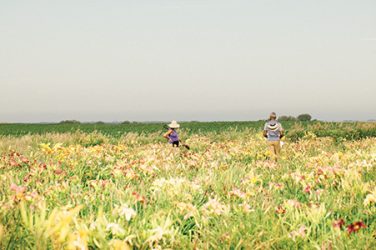Writer: Gene Johnston
This isn’t your grandfather’s farm. In fact, it’s not even your big brother’s. If you aren’t immersed in agriculture routinely, you’ve missed some amazing new farm technology.
Of course, change on the farm is nothing new, says GianCarlo Moschini, the Pioneer Chair in Science and Technology Policy at Iowa State University: “Farmers have been adopting new technologies for as long as there have been farmers. They’re trying to do what they did a hundred years ago—increase yields and reduce costs.
“It’s just that they have a different set of tools today.”
Here’s a look at some technologies that will give you a glimpse of changes already on the farm, and what’s coming.
Plant Genetics
Crop scientists continue to breed plants that yield more, yet require less care.
Herbicide-tolerant crops swept across the Iowa landscape beginning about 20 years ago. These genetically modified corn and soybean seeds survive without harm from the crop chemicals that kill weeds. With less mechanical weeding, farmers can plant and harvest more acres with less labor.
The next wave of genetic technology is just starting to be developed for use on the farm. It’s called “gene-editing.” Rather than insert a foreign gene into the cells of plant seeds, this new technique is more an editing of a seed’s own DNA. The resulting plants will be able to resist disease and pests, says Moschini, or be more tolerant of drought or produce a useful nutrient in greater abundance.
Iowa-based DuPont Pioneer, a leader in the emerging plant technology, is working on an early version of gene-editing for a specialized corn called waxy corn, especially useful for certain food and feed products. Until now, waxy corn yields have been lower than normal field corn, but the new gene-editing technology will change that, increasing both quality and yields. Other major farm seed companies are working on similar crop-enhancing technologies. “There are lots of crop attributes coming from biotechnology,” Moschini predicts.
Smart Machines
Nowhere is the “gee whiz” technology more noticeable than in the machines that till, plant, spray and harvest farm fields. They’re not just bigger than ever, they’re smarter.
Planters and fertilizer applicators are increasingly controlled by computers. They assimilate thousands of data points about soil, weather, fertility and past results to customize the application of seeds and crop nutrients in the exact amounts and precise locations to maximize efficiency.
Self-driving tractors are an ultimate goal of farm robot technology, says Moschini. As with the self-driving car, we aren’t quite there yet. But we have versions of it, he says, with tractors that are steered by GPS signals and sensors that take over for human control.
Iowa-based Kinze Manufacturing, which makes planters and grain carts, is one of the companies at the forefront of driverless robotic tractors. Kinze grain carts are hooked to a tractor and used in a field that is being harvested to offload grain from the combine and load it into a semitrailer waiting at the end of the field. Since this operation is only performed in the field, and not on a roadway, it lends itself to driverless technology. Kinze’s robot-tractor technology uses GPS, automation and sensors to find the combine and the trailer. It has already been tested successfully in farm fields.
Animal Genetics
Farm animals, too, are having their genes profiled. Two companies, GeneSeek and Igenity, have labs where you can send a blood drop or a hair follicle from a cow in your herd, and they’ll give you the animal’s genetic potential for such things as growth rate, meat quality, milk production or reproduction characteristics. The cost has come down to about $30 per test, making it affordable for picking bulls or replacement heifers.
In another cutting-edge animal project, a team of animal scientists from several major agricultural colleges, including Iowa State University, is finding cattle that grow faster and have fewer disease problems. They’ve identified the genes that are involved in susceptibility to bovine respiratory disease, the beef industry’s biggest profit robber. Soon, this will be another genetic criterion for selecting bulls.
Futuristic Farmer
Most of these technologies are not size-neutral, says Moschini. They often let farmers produce more with less labor. That’s why it now takes less than 2 percent of the U.S. workforce to run our farms, down from nearly 50 percent a century ago.
Moschini predicts that trend will not stop. While some smaller farmers who grow specialty or niche products for certain markets will thrive, most of Iowa agriculture will be large farms growing commodity crops and adopting more technology while shrinking in number and manpower.
But that doesn’t spell doom for careers in farming. Moschini says to think of the farm as everything upstream (production of inputs) and downstream (processing of outputs) from the farmer. “Think of all those jobs created at the cutting edge of technology for the farm. Those are modern jobs, requiring some very specialized and new skills.
“I think it will attract the talent of a lot of young people into agriculture, people with ideas and innovations,” he continues. “It’s just as exciting as any other industry. In fact, maybe it’s more exciting. Agriculture still gives you that unique interaction between nature, technology and the ability to apply data. That’s the future of the farm.”





